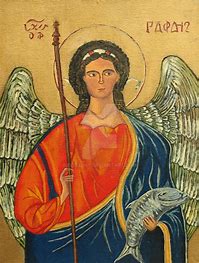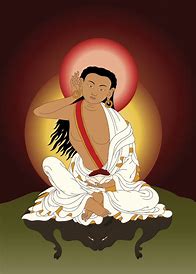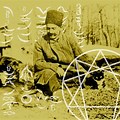Sacred Mysteries: Skulduggery behind the saints of All Souls











Sacred Mysteries: Skulduggery behind the saints of All Souls
A man always said a prayer when walking through a graveyard on his way home, for the repose of the souls of those buried there. The story is told by John Mirk, an author of popular spiritual works in the 14th century. One day, the man was pursued by murderous enemies. But he paused in the graveyard to say his usual prayer: “And anon all the churchyard rose full of bodyes, each one with an instrument in his hand of his craft, and they drove against the enemy. And he was ever after the more devout in praying for souls.”
This attitude matched the aim of the foundation of All Souls College, Oxford, in the 1430s. At this time of year we remember today those who died for their country. So did All Souls’ founder, Henry Chichele, Archbishop of Canterbury, and the fellows of his new foundation, who were to say a prayer each morning for the souls of Henry V and the English captains and others who had drunk “the cup of bitter death” in the French wars, as well as for all souls of the faithful departed (which included those of the enemy).
© Alamy St John the Baptist flanked by the four Latin Fathers of the Church in Sir Gilbert Scott's reredos - Alamy
So All Souls chapel was of even more importance than usual for an Oxford College. It had a marvellous wall full of statues – 122 in all – as a backdrop or reredos behind the altar where Mass was said for the dead. Naturally this was broken up at the Reformation and the remnants boarded up to make way for religious murals, first a not excellent Last Judgment by Isaac Fuller, which John Evelyn called “too full of nakeds for a Chapell”, then in 1716 a General Resurrection by James Thornhill.
It was a surprise, wrote Montagu Burrows (the strange author of a history of All Souls), to witness one day in 1871 on a workmen’s scaffold for repairs, plaster scraped away to reveal the medieval inscription Surgite mortui venite ad judicium, “Rise, ye dead and come to judgment”. Instead of a bare wall, Burrows realised there were remains of the medieval reredos “a discovery as unexpected as the sculpture of Nineveh”.
The present-day historian S J D Green pours cold water on Burrows’s claim. His is one of the entertaining and informative chapters in The Reredos of All Souls College, Oxford, which grew from a symposium on the subject. The detail of the graveyard army comes in the chapter by Eamon Duffy.
Professor Green’s chapter, on ecclesiological controversy and expert skulduggery surrounding the restoring the reredos, is a masterclass in All Souls politics. The leader of the “secularist” faction, Charles Henry Robarts, would have happily seen the chapel fall down and the college become shelf space for the Bodleian library, but he was outwitted by the Warden, Francis Leighton, if at the expense of the poor old architect, Henry Clutton, suddenly sacked on the pretext that the college had discovered he had become a Catholic (15 years earlier).
In 1872 the apotheosis of Leighton’s scheme came at a college meeting when the 5th Earl Bathurst, a fellow since 1811, rose up and expressed his wish “to restore the reredos at his own cost”. This was not to be resisted.
Under the direction of Sir Gilbert Scott, previously unthinkable images of saints were raised up – St Thomas of Canterbury and the four Latin Doctors, with St Jerome togged out as a cardinal. The dozens of 1870s figures, sculpted by the young E E Geflowski, seem weak, though it is curious to see John of Gaunt modelled on Lord Salisbury.
What astonished me in this book, though, are pictures of surviving medieval polychromy on the niche canopies, with touches of blue on the nebuly swirls of heaven round the figure of Christ at the summit of the whole achievement.
Reference: The Telegraph: Christopher Howse
Articles-Latest
- Koran burning conviction sparks fury as blasphemy law 'returns to UK'
- Robert Francis Prevost - Pope Leo XIV
- Pope Francis' death follows recent health challenges. Here's what we know about how he died.
- Easter April 2025 - international Celebrations
- The Rule of the twelve psalms -Worthy is the Lamb
- Religion in Africa Before Christianity and Islam
- 6 The Origin of Yahweh
- Dumo Di Milano
- What Did the Crow Tribe Believe In: Discover The Beliefs!
- 7 Reasons Historic Christianity Rejects the Book of Enoch
- 8 Breathtaking Mountain Monasteries Around the World
- Ethiopian Bible is oldest and most complete on earth
- Muhammad Muhammad was a prophet and founder of Islam.
- World Day of the Poor – SVP Christmas Campaign 2024
- Pope Francis to open 5 sacred portals on Christmas Eve — for a ritual that’s never been done before
- The 144,000 in Revelation
- Over 73 dead bodies 'used for meditation', 600 crocs in a pond, found in two Thai temples
- Occultism: Western Occult Tradition
- What is a Mudra
- Blood Sacrifices: Ancient Rituals of Life and Death
Articles-Most Read
- Home
- Let There Be Light
- Plants that feel and Speak
- The Singing Forest
- The Singing Forest-2
- Introduction
- Meditation
- Using Essential Oils for Spiritual Connection
- Heaven Scent
- Plants that Feel and Speak-2
- Purification
- Making the Spiritual Connection
- Anointing
- Essential Oils: The unseen Energies
- The Sanctity of Plants
- The Aroma Of Worship - Introduction
- The Aroma Of Worship-Foreward
- Methods Of Use
- Spiritual Blending
- Handling and Storage








